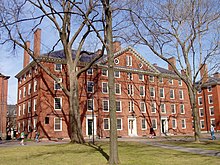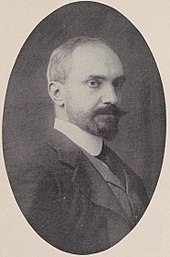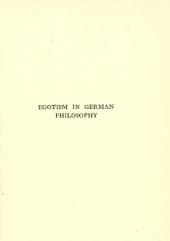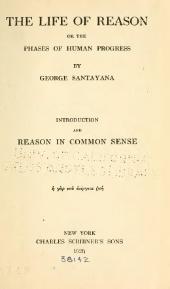fiction.wikisort.org - Writer
Jorge Agustín Nicolás Ruiz de Santayana y Borrás, known in English as George Santayana (/ˌsæntiˈænə, -ˈɑːnə/;[2] December 16, 1863 – September 26, 1952), was a Spanish and American philosopher, essayist, poet, and novelist. Born in Spain, Santayana was raised and educated in the US from the age of eight and identified himself as an American, although he always retained a valid Spanish passport.[3] At the age of 48, Santayana left his position at Harvard and returned to Europe permanently.
George Santayana | |
|---|---|
 A 1936 Time drawing of Santayana | |
| Born | Jorge Agustín Nicolás Ruiz de Santayana y Borrás December 16, 1863 Madrid, Spain |
| Died | September 26, 1952 (aged 88) Rome, Italy |
| Nationality | Spanish |
| Education |
|
| Era | 20th-century philosophy |
| Region | Western philosophy |
| School |
|
| Doctoral advisor | Josiah Royce |
| Notable students | Jacob Loewenberg,[1] Conrad Aiken, T. S. Eliot, Horace Kallen, Walter Lippmann, W. E. B. Du Bois, Edward Rand, Alain Locke, Van Wyck Brooks, Learned Hand, Felix Frankfurter, Max Eastman, Gertrude Stein, Wallace Stevens |
Main interests |
|
Notable ideas |
|
Influences
| |
Influenced
| |
Santayana is popularly known for aphorisms, such as "Those who cannot remember the past are condemned to repeat it",[4] "Only the dead have seen the end of war",[5] and the definition of beauty as "pleasure objectified".[6] Although an atheist, he treasured the Spanish Catholic values, practices, and worldview in which he was raised.[7] Santayana was a broad-ranging cultural critic spanning many disciplines. He was profoundly influenced by Spinoza's life and thought; and, in many respects, was a devoted Spinozist.[8]
Early life
Santayana was born on December 16, 1863, in Madrid and spent his early childhood in Ávila, Spain. His mother Josefina Borrás was the daughter of a Spanish official in the Philippines and he was the only child of her second marriage.[9] Josefina Borrás' first husband was George Sturgis, a Bostonian merchant with the Manila firm Russell & Sturgis, with whom she had five children, two of whom died in infancy. She lived in Boston for a few years following her husband's death in 1857; in 1861, she moved with her three surviving children to Madrid. There she encountered Agustín Ruiz de Santayana, an old friend from her years in the Philippines. They married in 1862. A colonial civil servant, Ruiz de Santayana was a painter and minor intellectual. The family lived in Madrid and Ávila, and Jorge was born in Spain in 1863.
In 1869, Josefina Borrás de Santayana returned to Boston with her three Sturgis children, because she had promised her first husband to raise the children in the US. She left the six-year-old Jorge with his father in Spain. Jorge and his father followed her to Boston in 1872. His father, finding neither Boston nor his wife's attitude to his liking, soon returned alone to Ávila, and remained there the rest of his life. Jorge did not see him again until he entered Harvard College and began to take his summer vacations in Spain. Sometime during this period, Jorge's first name was anglicized as George, the English equivalent.
Education

Santayana attended Boston Latin School and Harvard College, where he studied under the philosophers William James and Josiah Royce and was involved in eleven clubs as an alternative to athletics. He was founder and president of the Philosophical Club, a member of the literary society known as the O.K., an editor and cartoonist for The Harvard Lampoon, and co-founder of the literary journal The Harvard Monthly.[10] In December, 1885, he played the role of Lady Elfrida in the Hasty Pudding theatrical Robin Hood, followed by the production Papillonetta in the spring of his senior year.[11]
After graduating from Harvard[12] in 1886, Santayana studied for two years in Berlin.[13] He then returned to Harvard to write his dissertation on Hermann Lotze (1889).[14] He was a professor at Harvard from 1889–1912,[9] becoming part of the Golden Age of the Harvard philosophy department. Some of his Harvard students became famous in their own right, including Conrad Aiken, W. E. B. Du Bois, T. S. Eliot, Robert Frost, Horace Kallen, Walter Lippmann and Gertrude Stein. Wallace Stevens was not among his students but became a friend.[15] From 1896 to 1897, Santayana studied at King's College, Cambridge.[16]
Later life

This section needs additional citations for verification. (May 2022) |
Santayana never married. His romantic life, if any, is not well understood. Some evidence, including a comment Santayana made late in life comparing himself to A. E. Housman, and his friendships with people who were openly homosexual and bisexual, has led scholars to speculate that Santayana was perhaps homosexual or bisexual, but it remains unclear whether he had any actual heterosexual or homosexual relationships.[17]
In 1912, Santayana resigned his position at Harvard to spend the rest of his life in Europe. He had saved money and been aided by a legacy from his mother. After some years in Ávila, Paris and Oxford, after 1920, he began to winter in Rome, eventually living there year-round until his death. During his 40 years in Europe, he wrote 19 books and declined several prestigious academic positions. Many of his visitors and correspondents were Americans, including his assistant and eventual literary executor, Daniel Cory. In later life, Santayana was financially comfortable, in part because his 1935 novel, The Last Puritan, had become an unexpected best-seller. In turn, he financially assisted a number of writers, including Bertrand Russell, with whom he was in fundamental disagreement, philosophically and politically.
Santayana's one novel, The Last Puritan, is a Bildungsroman, centering on the personal growth of its protagonist, Oliver Alden. His Persons and Places is an autobiography. These works also contain many of his sharper opinions and bons mots. He wrote books and essays on a wide range of subjects, including philosophy of a less technical sort, literary criticism, the history of ideas, politics, human nature, morals, the influence of religion on culture and social psychology, all with considerable wit and humor.
While his writings on technical philosophy can be difficult, his other writings are more accessible and pithy. He wrote poems and a few plays, and left ample correspondence, much of it published only since 2000. Like Alexis de Tocqueville, Santayana observed American culture and character from a foreigner's point of view. Like William James, his friend and mentor, he wrote philosophy in a literary way. Ezra Pound includes Santayana among his many cultural references in The Cantos, notably in "Canto LXXXI" and "Canto XCV". Santayana is usually considered an American writer, although he declined to become an American citizen, resided in Fascist Italy for decades, and said that he was most comfortable, intellectually and aesthetically, at Oxford University. Although an atheist, Santayana considered himself an "aesthetic Catholic" and spent the last decade of his life in Rome under the care of Catholic nuns. In 1941, he entered a hospital and convent run by the Little Company of Mary (also known as the Blue Nuns) on the Celian Hill at 6 Via Santo Stefano Rotondo in Roma, where he was cared for by the Irish sisters until his death in September 1952.[18] Upon his death, he did not want to be buried in consecrated land, which made his burial problematic in Italy. Finally, the Spanish consulate in Rome agreed that he be buried in the Pantheon of the Obra Pía Española, in the Campo Verano cemetery in Rome.
Philosophical work and publications

Santayana's main philosophical work consists of The Sense of Beauty (1896), his first book-length monograph and perhaps the first major work on aesthetics written in the United States; The Life of Reason (5 vols., 1905–06), the high point of his Harvard career; Skepticism and Animal Faith (1923); and The Realms of Being (4 vols., 1927–40). Although Santayana was not a pragmatist in the mold of William James, Charles Sanders Peirce, Josiah Royce, or John Dewey, The Life of Reason arguably is the first extended treatment of pragmatism written.
Like many of the classical pragmatists, and because he was well-versed in evolutionary theory, Santayana was committed to metaphysical naturalism. He believed that human cognition, cultural practices, and social institutions have evolved so as to harmonize with the conditions present in their environment. Their value may then be adjudged by the extent to which they facilitate human happiness. The alternate title to The Life of Reason, "the Phases of Human Progress," is indicative of this metaphysical stance.
Santayana was an early adherent of epiphenomenalism, but also admired the classical materialism of Democritus and Lucretius. (Of the three authors on whom he wrote in Three Philosophical Poets, Santayana speaks most favorably of Lucretius). He held Spinoza's writings in high regard, calling him his "master and model."[19]
Although an atheist,[20][21] he held a fairly benign view of religion and described himself as an "aesthetic Catholic". Santayana's views on religion are outlined in his books Reason in Religion, The Idea of Christ in the Gospels, and Interpretations of Poetry and Religion.
He held racial superiority and eugenic views. He believed superior races should be discouraged from "intermarriage with inferior stock".[22]
Legacy
Santayana is remembered in large part for his aphorisms, many of which have been so frequently used as to have become clichéd. His philosophy has not fared quite as well. He is regarded by most as an excellent prose stylist, and John Lachs (who is sympathetic with much of Santayana's philosophy) writes, in On Santayana, that his eloquence may ironically be the very cause of this neglect.
Santayana influenced those around him, including Bertrand Russell, whom Santayana single-handedly steered away from the ethics of G. E. Moore.[23] He also influenced many prominent people such as Harvard students T. S. Eliot, Robert Frost, Gertrude Stein, Horace Kallen, Walter Lippmann, W. E. B. Du Bois, Conrad Aiken, Van Wyck Brooks, Felix Frankfurter, Max Eastman, Wallace Stevens. Stevens was especially influenced by Santayana's aesthetics and became a friend even though Stevens did not take courses taught by Santayana.[24][25][26]
Santayana is quoted by the Canadian-American sociologist Erving Goffman as a central influence in the thesis of his famous book The Presentation of Self in Everyday Life (1959). Religious historian Jerome A. Stone credits Santayana with contributing to the early thinking in the development of religious naturalism.[27] English mathematician and philosopher Alfred North Whitehead quotes Santayana extensively in his magnum opus Process and Reality (1929).[28]
Chuck Jones used Santayana's description of fanaticism as "redoubling your effort after you've forgotten your aim" to describe his cartoons starring Wile E. Coyote and Road Runner.[29]

In popular culture
Santayana's passing is referenced in the lyrics to singer-songwriter Billy Joel's 1989 music single, "We Didn't Start the Fire".[30]
The quote "Only the dead have seen the end of war." is frequently attributed or misattributed to Plato; an early example of this misattribution (if it is indeed misattributed) is found in General Douglas MacArthur's Farewell Speech given to the Corps of Cadets at West Point in 1962.[31][32]
The aphorism "Those who cannot remember the past are condemned to repeat it" is quoted as "unattributable" in Dan Abnett's novel Prospero Burns.
Awards
- Royal Society of Literature Benson Medal, 1925.[33]
- Columbia University Butler Gold Medal, 1945.[34]
- Honorary degree from the University of Wisconsin, 1911.[35]
Bibliography

- 1894. Sonnets And Other Verses.
- 1896. The Sense of Beauty: Being the Outline of Aesthetic Theory.
- 1899. Lucifer: A Theological Tragedy.
- 1900. Interpretations of Poetry and Religion.
- 1901. A Hermit of Carmel And Other Poems.
- 1905–1906. The Life of Reason: or the Phases of Human Progress, 5 vols.
- 1910. Three Philosophical Poets: Lucretius, Dante, and Goethe.
- 1913. Winds of Doctrine: Studies in Contemporary Opinion.
- 1915. Egotism in German Philosophy.
- 1920. Character and Opinion in the United States: With Reminiscences of William James and Josiah Royce and Academic Life in America.
- 1920. Little Essays, Drawn From the Writings of George Santayana. by Logan Pearsall Smith, With the Collaboration of the Author.
- 1922. Soliloquies in England and Later Soliloquies.
- 1922. Poems.
- 1923. Scepticism and Animal Faith: Introduction to a System of Philosophy.
- 1926. Dialogues in Limbo
- 1927. Platonism and the Spiritual Life.
- 1927–40. The Realms of Being, 4 vols.
- 1931. The Genteel Tradition at Bay.
- 1933. Some Turns of Thought in Modern Philosophy: Five Essays
- 1935. The Last Puritan: A Memoir in the Form of a Novel.
- 1936. Obiter Scripta: Lectures, Essays and Reviews. Justus Buchler and Benjamin Schwartz, eds.
- 1944. Persons and Places.
- 1945. The Middle Span.
- 1946. The Idea of Christ in the Gospels; or, God in Man: A Critical Essay.
- 1948. Dialogues in Limbo, With Three New Dialogues.
- 1951. Dominations and Powers: Reflections on Liberty, Society, and Government.
- 1953. My Host The World
Posthumous edited/selected works
- 1955. The Letters of George Santayana. Daniel Cory, ed. Charles Scribner's Sons. New York. (296 letters)
- 1956. Essays in Literary Criticism of George Santayana. Irving Singer, ed.
- 1957. The Idler and His Works, and Other Essays. Daniel Cory, ed.
- 1967. The Genteel Tradition: Nine Essays by George Santayana. Douglas L. Wilson, ed.
- 1967. George Santayana's America: Essays on Literature and Culture. James Ballowe, ed.
- 1967. Animal Faith and Spiritual Life: Previously Unpublished and Uncollected Writings by George Santayana With Critical Essays on His Thought. John Lachs, ed.
- 1968. Santayana on America: Essays, Notes, and Letters on American Life, Literature, and Philosophy. Richard Colton Lyon, ed.
- 1968. Selected Critical Writings of George Santayana, 2 vols. Norman Henfrey, ed.
- 1969. Physical Order and Moral Liberty: Previously Unpublished Essays of George Santayana. John and Shirley Lachs, eds.
- 1979. The Complete Poems of George Santayana: A Critical Edition. Edited, with an introduction, by W. G. Holzberger. Bucknell University Press.
- 1995. The Birth of Reason and Other Essays. Daniel Cory, ed., with an Introduction by Herman J. Saatkamp, Jr. Columbia Univ. Press.
- 2009. The Essential Santayana. Selected Writings Edited by the Santayana Edition, Compiled and with an introduction by Martin A. Coleman. Bloomington: Indiana University Press.
- 2009. The Genteel Tradition in American Philosophy and Character and Opinion in the United States (Rethinking the Western Tradition), Edited and with an introduction by James Seaton and contributions by Wilfred M. McClay, John Lachs, Roger Kimball and James Seaton Yale University Press.
The Works of George Santayana
Unmodernized, critical editions of George Santayana's published and unpublished writing. The Works is edited by the Santayana Edition and published by The MIT Press.
- 1986. Persons and Places. Santayana's autobiography, incorporating Persons and Places, 1944; The Middle Span, 1945; and My Host the World, 1953.
- 1988 (1896). The Sense of Beauty: Being the Outline of Aesthetic Theory.
- 1990 (1900). Interpretations of Poetry and Religion.
- 1994 (1935). The Last Puritan: A Memoir in the Form of a Novel.
- The Letters of George Santayana. Containing over 3,000 of his letters, many discovered posthumously, to more than 350 recipients.
- 2001. Book One, 1868–1909.
- 2001. Book Two, 1910–1920.
- 2002. Book Three, 1921–1927.
- 2003. Book Four, 1928–1932.
- 2003. Book Five, 1933–1936.
- 2004. Book Six, 1937–1940.
- 2006. Book Seven, 1941–1947.
- 2008. Book Eight, 1948–1952.
- 2011. George Santayana's Marginalia: A Critical Selection, Books 1 and 2. Compiled by John O. McCormick and edited by Kristine W. Frost.
- The Life of Reason in five books.
- 2011 (1905). Reason in Common Sense.
- 2013 (1905). Reason in Society.
- 2014 (1905). Reason in Religion.
- 2019 (1910). Three Philosophical Poets: Lucretius, Dante, and Goethe, Critical Edition, Edited by Kellie Dawson and David E. Spiech, with an introduction by James Seaton
See also
- American philosophy
- List of American philosophers
- Scientistic materialism
References
- John R. Shook (ed.), The Dictionary of Modern American Philosophers, Continuum, 2005, p. 1499.
- "the definition of Santayana". dictionary.com.
- George Santayana, "Apologia Pro Mente Sua", in P. A. Schilpp, The Philosophy of George Santayana (1940), 603.
- George Santayana (1905) Reason in Common Sense, p. 284, volume 1 of The Life of Reason
- George Santayana (1922) Soliloquies in England and Later Soliloquies, number 25
- "Beauty as Intrinsic Pleasure by George Santayana".
- Lovely, Edward W. (Sep 28, 2012). George Santayana's Philosophy of Religion: His Roman Catholic Influences and Phenomenology. Lexington Books. pp. 1, 204–206.
- See his letters and works (such as Persons and Places; Soliloquies in England and Later Soliloquies)
- "George Santayana" at the Stanford Encyclopedia of Philosophy. Retrieved April 25, 2021
- Parri, Alice Two Harvard Friends: Charles Loeser and George Santayana
- Garrison, Lloyd McKim, An Illustrated History of the Hasty Pudding Club Theatricals, Cambridge, Hasty Pudding Club, 1897.
- and he was a member of the Phi Beta Kappa student fraternity Who Belongs To Phi Beta Kappa Archived 2012-01-03 at the Wayback Machine, ’Phi Beta Kappa website’’, accessed Oct 4, 2009
- "SANTAYANA, George". Who's Who. Vol. 59. 1907. p. 1555.
- George Santayana, Lotze's system of philosophy, Ph.D., 1889
- Lensing, George S. (1986). Wallace Stevens: A Poet's Growth. LSU Press. 313 pp. ISBN 0807112976. p.12-13.
- "Santayana, George (SNTN896G)". A Cambridge Alumni Database. University of Cambridge.
- Saatkamp, Herman; Coleman, Martin (1 January 2014). Zalta, Edward N. (ed.). The Stanford Encyclopedia of Philosophy. Metaphysics Research Lab, Stanford University – via Stanford Encyclopedia of Philosophy.
- "George Santayana, 88, Dies in Rome" Harvard Crimson death notice of 29 September 1952
- The Letters of George Santayana: Book Eight, 1948–1952 By George Santayana p 8:39
- "My atheism, like that of Spinoza, is true piety towards the universe, and denies only gods fashioned by men in their own image, to be servants of their human interests." George Santayana, "On My Friendly Critics," in Soliloquies in England and Later Soliloquies, 1922 (from Rawson's Dictionary of American Quotations via credoreference.com). Accessed August 1, 2008.
- "Santayana playfully called himself 'a Catholic atheist,' but in spite of the fact that he deliberately immersed himself in the stream of Catholic religious life, he never took the sacraments. He neither literally regarded himself as a Catholic nor did Catholics regard him as a Catholic." Empiricism, Theoretical Constructs, and God, by Kai Nielsen, The Journal of Religion, Vol. 54, No. 3 (Jul., 1974), pp. 199–217 (p. 205), published by The University of Chicago Press.
- Santayana, George (2015-11-26). "The Life of Reason: Human Understanding".
- Michael K. Potter. Bertrand Russell's Ethics. London and New York: Continuum, 2006. Pp. xiii, 185. ISBN 0826488102, p.4
- Lensing, George S. (1986). Wallace Stevens: A Poet's Growth. LSU Press. 313 pp. ISBN 0807112976. p.12-23.
- "Stevens, Wallace". Archived from the original on 2013-07-25. Retrieved 2014-01-07.
- Saatkamp, Herman, "George Santayana" The Stanford Encyclopedia of Philosophy (Fall 2010 Edition), Edward N. Zalta (ed.)
- Religious Naturalism Today, pp. 21–37
- Whitehead, A.N. (1929). Process and Reality. An Essay in Cosmology. Gifford Lectures Delivered in the University of Edinburgh During the Session 1927–1928, Macmillan, New York, Cambridge University Press, Cambridge UK.
- See the sixth paragraph, That's Not All, Folks! "Of course you know this means war." Who said it?, by Terry Teachout, The Wall Street Journal, November 25, 2003, (Archived at WebCite).
- We Didn't Start the Fire. BillyJoel.com. Retrieved 2016-09-25.
- SUZANNE, Bernard F. "Plato FAQ: Did Plato write :"Only the dead have seen the end of war"?". plato-dialogues.org. Retrieved 2018-04-29.
- "Who Really Said That?". The Chronicle of Higher Education. 2013-09-16. Retrieved 2018-04-29.
- "The Benson Medal". Archived from the original on 2013-09-18. Retrieved 2014-01-07.
- George Santayana; William G. Holzberger (Editor). (2006). The Letters of George Santayana, Book Seven, 1941–1947. (MIT Press (MA), Hardcover, 9780262195560, 569pp.) (p. 143).
- "University Lectures – Secretary of the Faculty". Archived from the original on 2013-09-28.
Further reading
- W. Arnett, 1955. Santayana and the Sense of Beauty, Bloomington, Indiana University Press.
- H. T. Kirby-Smith, 1997. A Philosophical Novelist: George Santayana and the Last Puritan. Southern Illinois University Press.
- Jeffers, Thomas L., 2005. Apprenticeships: The Bildungsroman from Goethe to Santayana. New York: Palgrave: 159–84.
- Lamont, Corliss (ed., with the assistance of Mary Redmer), 1959. Dialogue on George Santayana. New York: Horizon Press.
- McCormick, John, 1987. George Santayana: A Biography. Alfred A. Knopf. The biography.
- Singer, Irving, 2000. George Santayana, Literary Philosopher. Yale University Press.
- Miguel Alfonso, Ricardo (ed.), 2010, La estética de George Santayana, Madrid: Verbum.
- Patella, Giuseppe, Belleza, arte y vida. La estética mediterranea de George Santayana, Valencia, PUV, 2010, pp. 212. ISBN 978-84-370-7734-5.
- Pérez Firmat, Gustavo. Tongue Ties: Logo-Eroticism in Anglo-Hispanic Literature. New York: Palgrave Macmillan, 2003.
- Moreno, Daniel. Santayana the Philosopher: Philosophy as a Form of Life. Lewisburg: Bucknell University Press, 2015. Translated by Charles Padron.
External links
- Critical Edition of the Works of George Santayana
- Works by George Santayana at Project Gutenberg
- Works by George Santayana at Faded Page (Canada)
- Works by or about George Santayana at Internet Archive
- Saatkamp, Herman. "George Santayana". In Zalta, Edward N. (ed.). Stanford Encyclopedia of Philosophy. Includes a complete bibliography of the primary literature, and a fair selection of the secondary literature
- Internet Encyclopedia of Philosophy: "George Santayana" by Matthew C. Flamm
- The Santayana Edition
- Works by George Santayana at LibriVox (public domain audiobooks)

- Overheard in Seville: Bulletin of the Santayana Society
- On George Santayana: Spanish-English Blog about Santayana
- "George Santayana: Catholic Atheist" by Richard Butler in Spirituality Today, Vol. 38 (Winter 1986), p. 319
- George Santayana at Curlie
- George Santayana at Find a Grave
- George Santayana, "Many Nations in One Empire" (1934)
На других языках
- [en] George Santayana
[es] George Santayana
Jorge Agustín Nicolás Ruiz de Santayana y Borrás, más conocido como George Santayana (Madrid, 16 de diciembre de 1863-Roma, 26 de septiembre de 1952), fue un filósofo, ensayista, poeta y novelista español. Santayana, que creció y se formó en Estados Unidos,[1] escribió toda su obra en inglés y es considerado un hombre de letras estadounidense. A los cuarenta y ocho años de edad dejó de enseñar en la Universidad de Harvard y volvió a Europa, donde murió. Su último deseo fue ser enterrado en el panteón español en Roma. Probablemente su cita más conocida sea «Aquellos que no pueden recordar el pasado están condenados a repetirlo», de La razón en el sentido común, el primero de los cinco volúmenes de su obra La vida de la razón.[ru] Сантаяна, Джордж
Джордж Сантая́на (англ. George Santayana), при рождении Хо́рхе Агусти́н Никола́с Руи́с де Сантая́на — исп. Jorge Agustín Nicolás Ruiz de Santayana; 16 декабря 1863 года, Мадрид — 26 сентября 1952 года, Рим) — американский философ и писатель испанского происхождения. Сохраняя всю жизнь испанское гражданство, Сантаяна писал по-английски, вырос и получил образование в США и считается прежде всего принадлежащим к американской культуре, хотя большую часть жизни провёл в различных странах Европы.Другой контент может иметь иную лицензию. Перед использованием материалов сайта WikiSort.org внимательно изучите правила лицензирования конкретных элементов наполнения сайта.
WikiSort.org - проект по пересортировке и дополнению контента Википедии

